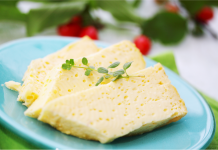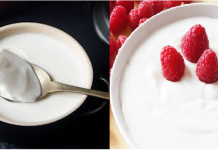Paleo diet, also known as the cavemen diet, in which your eating habits are same as those of the cavemen. It advocates you to eat just the way our ancestors did at the beginning of evolution, more specifically the Paleolithic era that dates back to 2.5 million to 10,000 years ago. The main belief that surrounds paleo diet is that our bodies are more suited to eat the way early cavemen did.
This diet focusses on what you eat and tries to bring your eating habits inline to the way you ate at the time of evolution. When asked about this diet our in-house dietitian, Sujetha Shetty, says, “Paleo diet is a lifestyle, it is not a short-term change. It is an approach to diet based on the quality of food that you consume.”
This diet also focuses on avoiding all kinds of processed food as it is considered unhealthy, this restriction thereby reduces the number of food options you have while following a regular diet. But, if you consider this restriction as a drawback, our dietitian differs from your opinion. She says, “The best part about the diet is you are more likely to eat foods that are not processed or have any additives. Many people tend to lose weight due to limited food choices. You must take care of the portion of the food that you consume as the diet does not specify the portions of the allowed foods.”
Now, if you plan to follow this diet, here is all you need to know about the food you should and should not eat:
Know The Foods Allowed
Meats and Eggs

These were the most important and obviously, the staple of the hunter gatherer back then. Eggs, lean meat is allowed but it should come from grass-fed animals, fish and other sea foods are also allowed.
Vegetables

The cavemen did not cook the vegetables they gathered, which means that only those that can be eaten raw are allowed. All non-starchy veggies like lettuce, asparagus, greens, french beans, broccoli, Brussel sprouts, cauliflower, peppers (all kinds), egg plants, onions
Fruits

Fresh fruits with low fructose (fruit sugar) content are allowed in Paleo Diet.
Nuts and Seeds

Nuts like almonds, walnuts, hazelnuts, peanuts and seeds like sunflower seeds, pumpkin seeds are allowed in this diet form.
Oils

Oils obtained from plants and nuts are generally allowed, such as almond, coconut, avocado and olive oils.
Know The Foods You Should Avoid
Legumes, pulses

Whatever cannot be eaten without being cooked, is generally not allowed in the paleo diet. Beans, peas, whole pulses cannot be digested raw and so are excluded from the diet.
Dairy Products

Milk, butter, cream, yogurt, ice cream, cheese, and paneer are all banned since the early man did not resort to domesticating animals for milk.
Also, all cereals and grains (Ex: oats, rice, barley, wheat, pasta) starchy veggies like potatoes, sweet potatoes, fruit juices, soft drinks, legumes (all beans), lentils, peanuts, peanut butter, soy and its products, sugar and processed foods are not allowed in this diet.
To get a diet plan, avail our personalized diet counselling services at, Gympik.
We do not believe in the “one size fits all”, thus, it is better to not restrict yourself to one type of diet. Also, for paleo diet to work you must make it a lifestyle and stick to it. Which means, that you cannot do away with it once you reach your ideal weight, you should follow the diet for a considerable amount of time to see the visible changes and enjoy its benefits.
So, if you don’t want to restrict yourself to one diet form, the alternative is to eat fresh fruits and be in contact with nature as much as possible. Also, avoid processed food and that is the safest option to eat healthy and stay fit. Choose your lifestyle wisely and let your health do the talking. Share this article and subscribe to Gympik for more health-related information.


 Traqade
Traqade































[…] Source link […]
[…] Supply hyperlink […]
Moreover, factors like weather conditions and holidays can also impact shipping costs. Adverse weather, such as snowstorms or hurricanes, can affect transportation routes and cause delays or disruptions.https://www.youtube.com/watch?v=PGKKS2F3BEk
[…] wellness through diet, the Paleo way of eating may be worth considering. By returning to the nutritious staples of our hunter-gatherer ancestors, you can experience the vibrant health and well-being that […]